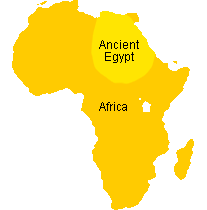



An Exploration of Chinchorro and Ancient Egyptian Mummification Practices

Image credit: Arriaza 1995a.

Image credit: Nicholson Museum

Image credit: Marcela Sepulveda/ Live Science
The Chinchorro and Ancient Egyptians are two cultures who have demonstrated the importance of beliefs around death in the lives of the living through the effort they have placed in mummifying (that is, preserving) their dead. In this project, we compose a cross-cultural analysis between the Chinchorro and the Ancient Egyptian mummy traditions to unravel the similarities and differences between these two ways of caring for the dead, with the objective of determining if any common human attributes towards death can be discerned.
Although the mummies of Ancient Egypt are widely known and mysticized, the beliefs and practices which brought about these mummies are not as popularly understood. Similarly, few likely know of the Chinchorro culture which brought about what to us now are the oldest mummies in the world (dating back 7,000 years). The Chinchorro (7020-1110 BCE) were small sedentary fishing societies who lived on the Andean coast. They are believed to have mummified all of their dead (Arriaza 1995a), in contrast with the Ancient Egyptian’s highly hierarchically differentiated mortuary practices. It was not until the Middle Kingdom period that those under the pharaoh began to be mummified and later still in the Graeco-Roman period when the poor finally gained access to the afterlife (David 1978). We concentrated our focus on Ancient Egyptian mummification processes of this period as we expected it would allow a more even comparison than that of a sedentary fisher to a pharaoh.
In the end, though the cultural periods are united in their preservation of the dead and though both existed in similar eras and environments, we found very different mummification practices and a myriad of beliefs driving the similar desire to care for the dead through the preservation of their bodies. It is in this project we explore these beliefs and practices, similarities and differences.
Finally, there was also the issue of the ambiguity of the past. The Ancient Egyptians had writing and a large material culture. The lack of information, on the other hand, on the Chinchorro culture, combined with the fact that much of the interpretation around Chinchorro beliefs comes from what is known about other cultures (including the Egyptians), was at first believed to be a potential source of bias towards finding similarities. However, this ambiguity of interpretation was overall felt to be more of an obstruction to cross-cultural analysis than anything else.
Introduction

Image credit: Wikipedia.

Image credit: The British Museum.
